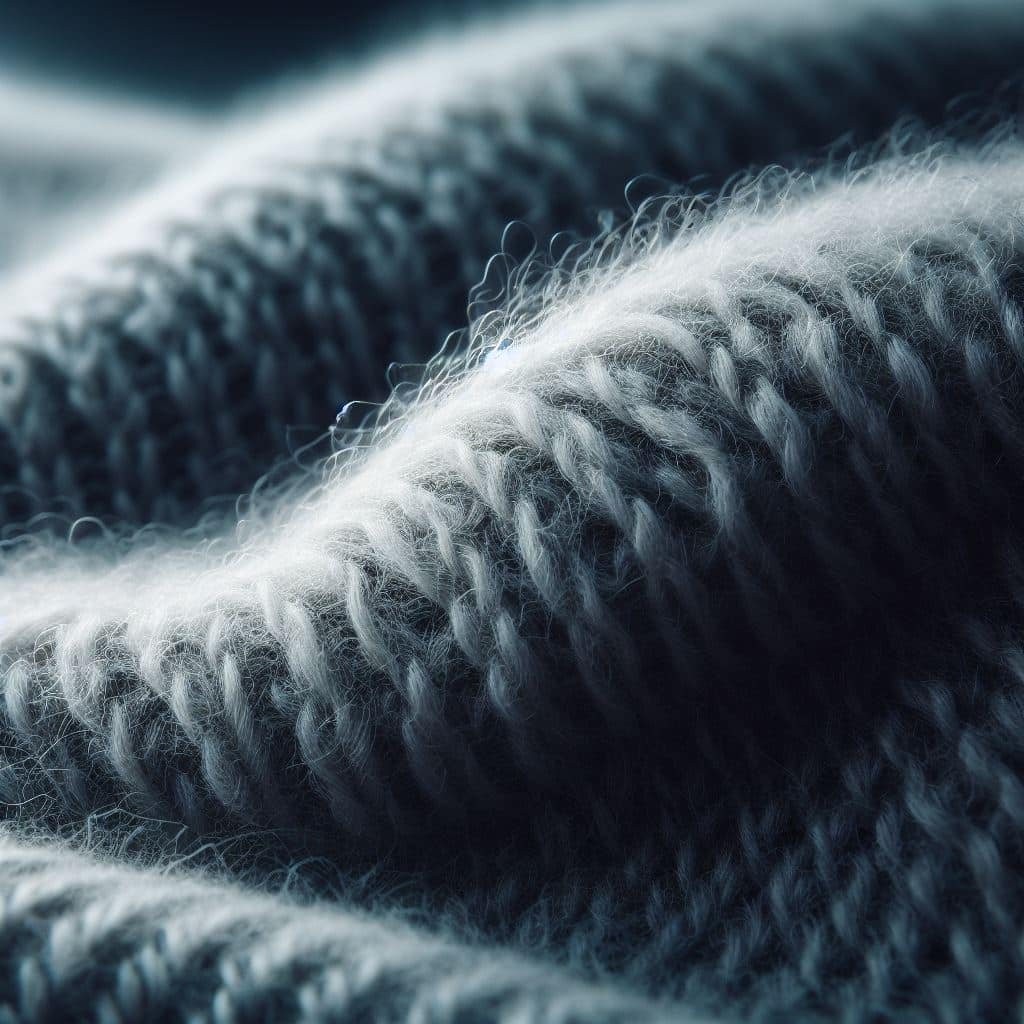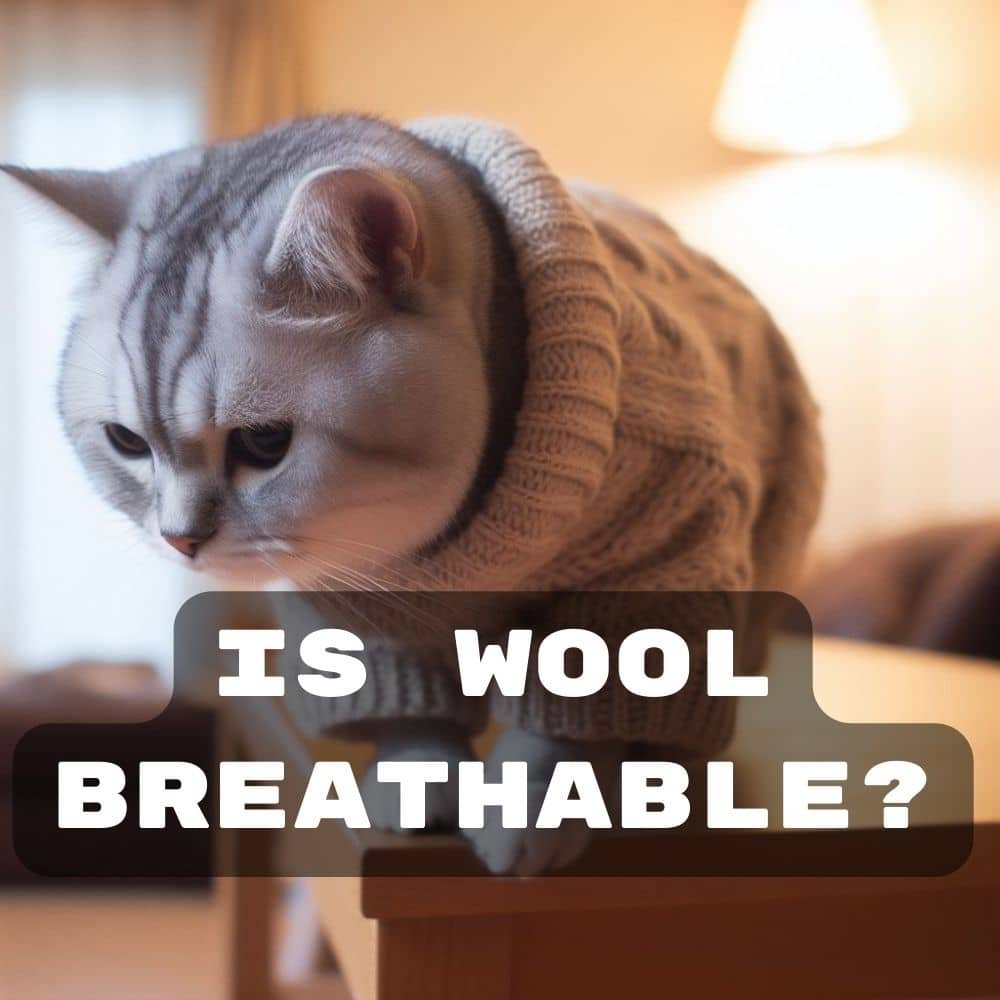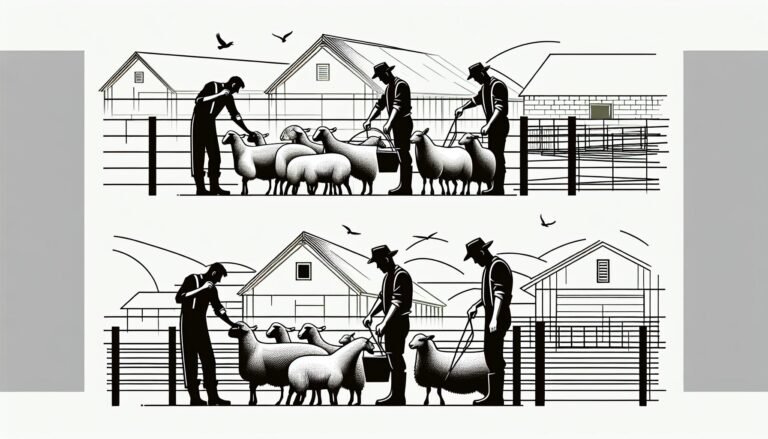Is Wool Breathable?
Hold on to your hats, fashionistas and outdoor adventurers! Ever wondered why wool feels so comfy? It’s not magic; it’s science! Wool fibers have a unique structure that makes them your personal climate control system. Imagine natural waves in the fiber called crimps, which create pockets of air for better insulation. Then you have scales that lift when it’s hot, allowing air to flow freely. And let’s not forget the core that can absorb moisture, making you feel less sweaty. Feel like digging deeper? Check out our guide on how wool is sourced and processed.
Oh, you bet! If wool is the superhero of fibers, then Merino is the Iron Man of the wool world. Merino wool is finer, softer, and more breathable than your regular wool. Its fibers are thinner, allowing for better air circulation. It also has excellent moisture-wicking properties that keep you dry, no sweat! Curious about the comfort of Merino? Don’t miss our article on the softness of Merino wool.
Hold your horses, what’s mineral wool doing here? It’s wool, but not as you know it. Made from natural or synthetic minerals, this stuff is usually used for insulation in buildings. But here’s the kicker: it’s also breathable! Mineral wool comes from minerals and is not organic like wool from animals, but it still has some game. It’s fire-resistant and even offers sound insulation. Hungry for more? Watch out for part 2 where we’ll tackle questions like, “Does Wool Keep You Cool in Summer?” and “Are Wool Pants Hot in Summer?”

Wool’s Breathability – Beyond the Basics
Who hasn’t been caught in the cotton vs. wool debate? While both fibers have their merits, when it comes to breathability, wool steals the show. Unlike cotton, which can absorb moisture but tends to remain wet, wool is a moisture management kingpin. It can take in moisture and release it into the air, keeping you neither too hot nor too cold. Also, let’s not ignore its odor resistance—wool keeps you smelling fresh all day long! If you’re craving more fiber face-offs, head over to our comprehensive guide on cashmere vs. wool.
Summer and wool? Yep, you heard that right. You might be tempted to shove all your woolens into the back of the closet when summer arrives, but resist the urge. Wool is incredibly versatile and can be a summer wardrobe staple. It offers natural UV protection and is highly breathable, which means you can say goodbye to that sticky, sweaty feeling. And speaking of moisture, wool’s natural fibers wick it away, keeping you dry and comfortable. If you’re still skeptical about wool in warm weather, take a look at our myth-busting article on wearing cashmere in the summer.
Does wool absorb water? You might think the answer is a no-brainer, but wool’s relationship with water is more like a sophisticated tango than a straightforward yes or no. Wool fibers can absorb up to 30% of their weight in moisture and still feel dry. They have a hydrophilic (water-loving) core that absorbs moisture from the skin and a hydrophobic (water-repelling) exterior that keeps external moisture at bay. So, in essence, wool can keep you dry from both inside and out. If you’re thirsty for more on this topic, take a sip from our article exploring wool’s water resistance.
Wool’s Breathability – The Summer and Sweat Edition
Ah, the age-old question: Are wool pants too hot for summer? Well, it’s time to debunk some myths. Wool pants can absolutely be your summer go-to. The key is to choose lightweight wool, like tropical wool or gabardine. These finer weaves are airy and let your skin breathe. And since wool naturally wicks away moisture, you won’t have to worry about sweaty discomfort either.
Types of Summer-Friendly Wool Pants
| Type | Features | Best For |
|---|---|---|
| Tropical Wool | Lightweight, breathable | Office wear |
| Merino Wool | Soft, moisture-wicking | Casual outings |
| Gabardine | Durable, water-resistant | Outdoor activities |
For more woolly wisdom, you might want to read our article on the cozy elegance of angora wool socks.
Now, let’s clear the air—does wool make you sweat? Short answer: No, it doesn’t. In fact, wool is a moisture-wicking marvel. It pulls sweat away from your skin, allowing it to evaporate quickly. And there’s more—wool has natural odor-resisting properties. Less sweat, less stink; it’s that simple.
Why Wool Doesn’t Make You Sweat
- Moisture-Wicking: Say goodbye to sweat patches.
- Quick Drying: No lingering dampness.
- Odor Control: Smell fresh all day.
Intrigued? Learn more about this in our guide on Merino wool’s softness.
Wool in the summer? Absolutely! Contrary to popular belief, wool isn’t just for keeping warm in winter. It’s an all-season superstar. Wool garments offer natural UV protection—no need for any added chemicals. They’re also highly breathable, so you can enjoy your summer hikes or beach trips without feeling like a walking sauna.
Summer Wool Essentials
| Item | Features |
|---|---|
| Wool T-Shirts | Breathable, UV protection |
| Wool Shorts | Moisture-wicking, comfortable |
| Wool Socks | Odor control, quick-drying |
The Breathability of Wool – The Cozy Finale
Let’s talk about feet—yeah, you heard me right. The last thing you want during a hot summer day is sweaty feet. It’s uncomfortable, it’s annoying, and let’s face it, it can be a bit embarrassing. But guess what? Wool, specifically wool socks, can be your feet’s best friend. Unlike synthetic materials that trap moisture, wool socks have the ability to wick moisture away from your skin. You get to stay dry and bid adieu to that icky, sticky feeling.
Benefits of Wool Socks
- Moisture-Wicking: Keeps your feet dry.
- Temperature Regulation: Adapts to your body’s needs.
- Odor Control: Less moisture means less odor.
We’ve talked about wool in your wardrobe, but what about wool in your home? Are wool blankets breathable? The answer is a resounding yes. Wool blankets can be incredibly breathable, making them ideal for both summer and winter. They have the ability to regulate temperature, keeping you warm when it’s cold and cool when it’s hot. Plus, just like wool clothing, wool blankets are moisture-wicking.

Types of Breathable Wool Blankets
| Type | Features | Best For |
|---|---|---|
| Merino Wool | Soft, breathable | All-season comfort |
| Cashmere | Luxurious, lightweight | Special occasions |
| Lambswool | Cozy, less fine than Merino | Winter warmth |
For more on wool blankets, you might be interested in our article about yak wool, the hidden gem of the Himalayas.
Some Final Words
We’ve unraveled the mysteries of wool’s breathability, from your head to your toes and even your home. Wool isn’t just a winter wonder—it’s an all-season champion. Whether it’s a pair of summer-friendly wool pants, odor-defying wool socks, or a cozy wool blanket, this natural fiber has got you covered—literally.
That’s a wrap, folks! Feel like diving deeper into the woolly world? Just explore more on Aboutwool.com. 🐑🌟







